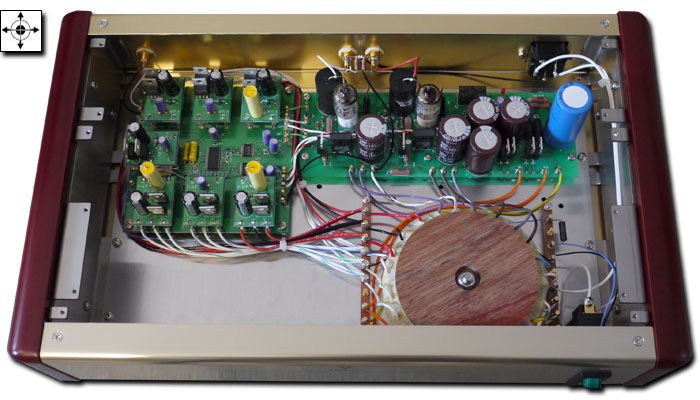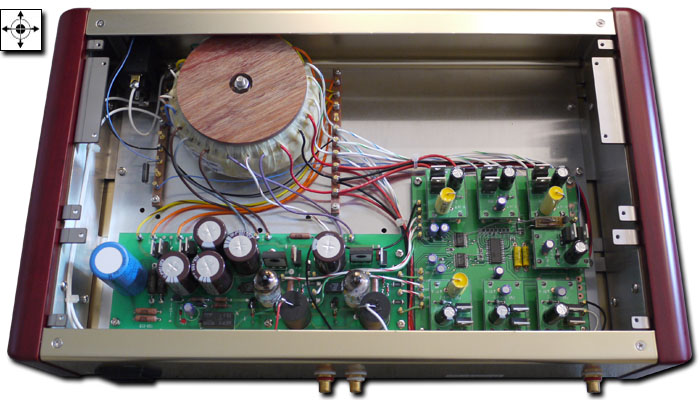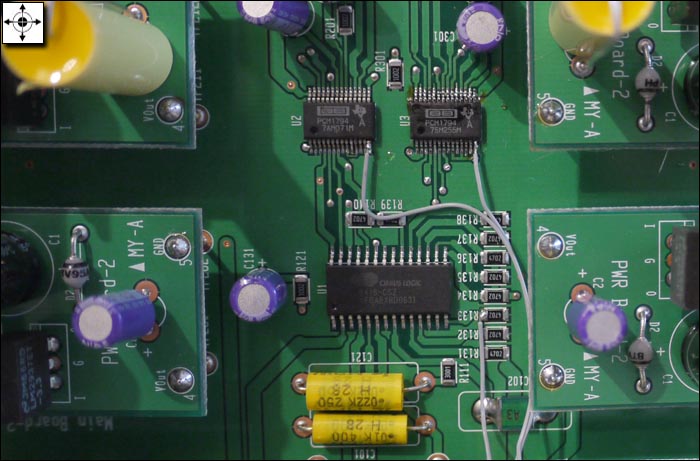This review page is supported in part by the sponsors whose ad banners are displayed below |
 |
 |
|
 |
Reviewer: Srajan Ebaen
Financial Interests: click here
Source: Esoteric UX-1, Yamamoto YDA-01
Preamp/Integrated: Esoteric C-03 (transistor), ModWright DM 36.5 (valves)
Amplifier: FirstWatt F5
Speakers: ASI Tango R, Zu Essence
Cables: Complete loom of ASI Liveline
Stands: 4 x Ikea Molger and butcher-block platforms with metal footers
Powerline conditioning: 2 x Walker Audio Velocitor S
Sundry accessories: Furutech RD-2 CD demagnetizer; Nanotech Nespa Pro; extensive use of Acoustic System Resonators, noise filters and phase inverters, Advanced Acoustics Orbis Wall & Corner units
Room size: The sound platform is 3 x 4.5m with a 2-story slanted ceiling above; four steps below continue into an 8m long combined open kitchen, dining room and office, an area which widens to 5.2m with a 2.8m ceiling; the sound platform space is open to a 2nd story landing and, via spiral stair case, to a 3rd-floor studio; concrete floor, concrete and brick walls from a converted barn with no parallel walls nor perfect right angles; short-wall setup with speaker backs facing the 8-meter expanse and 2nd-story landing.
Review Component Retail: ¥280,000
|

|
 |
A year ago, Shigeki Yamamoto's YDA-01 DAC won our Blue Moon award. Contrary to brand expectations, it sported no tubes but otherwise conformed perfectly to zero feedback SET ideals in sound and operation. Eschewing op amps even in the ubiquitous I/V conversion, it's been part of my reference source leashed up to Esoteric's mighty UX-1 universal machine as transport. A visiting Jean Hiraga confessed that he too listens to such an Esoteric/Yamamoto combo and considers it most excellent. He seemed surprised to see two Yamamoto amplifiers, one headphone amp and their converter in my private collection. "Very rare in Europe" the famous Frenchman opined. |
|
|
 |
Now Shikegi-San has added a pair of Western Electric 408A pentodes to the YDA-01—they already power his headphone amp—which earns the converter the 'B' suffix. When dispatching the PNP transistor version, he'd explained that he omitted valves to avoid circuit complications and maintain a low sell price. To successfully add a tube buffer without taking away from the perfected preceding circuit—and to improve upon the transistor outputs—really would take significantly more. Time that is. Which has finally come. The digital section with its 8 x oversampling filter and automatic 32-192kHz signal lock remains identical and interested readers should refer to the original report for details on it.
|
|
|
|
 |
Unexpected challenges arose when coupling the current output of the DAC to the voltage control element of the tubes.
Shigeki-San didn't consider the sonics optimized when using simple CR coupling. The final circuit uses resistive loading at the D/A converter output which then is coupled directly to the tube inputs in a single feedback-less step. Great care was taken to shield the simple amplification circuit from power supply interactions which now required additional plate and screen grid circuits. Deeming the latter absolutely critical to sonics, Yamamoto chose a constant current Mosfet solution. The heater circuit is rectified with a large Schottky diode. Another overriding concern was parts reduction to retain circuit simplicity and the sonic purity Shigeki-San associates with it. Of the dual-differential outputs of the BB PCM 1794A chips, only a single output per channel is used since it sounded better to him than a paralleled connection.

To do away with the conventional rail fuse, the AC mains switch became a circuit breaker but in practice functions just like any ordinary on/off switch (Sound Application's Jim Weil was one of the first to incorporate magnetic circuit breakers for audio purposes). The original chassis gained acrylic peep holes to telegraph the tube glow while a surrounding circle of perforations assists convection cooling. To prevent leak current through the output coupling capacitors while the power supply charges up, Yamamoto has inserted a new muting relay circuit* for non-signal intermissions.
The tube buffer increased output voltage to 4V/0dB and output impedance is now 2.6K. (In case you're concerned, a replacement WE408A will set you back all of ¥4,000 or ca. $42). And yes, the YDA-01B still has no USB. Perhaps that's why it didn't become the YDA-02. And, it could be argued that anyone interested in serious vacuum tube audio isn't into PC audio even though Gordon Rankin's entire USB DAC empire rests upon that connection. But Yamamoto isn't one to be rushed with anything. We won't see a USB DAC from him until he has a statement to make...

______________________
*
In the YDA-01, when a specific Accuphase transport was used, there were instances where the muting circuit did not work normally but produced noise during non signal.
In order to improve that situation, I changed the muting circuit in the YDA-01B.
It is the small section next to the digital circuit board. This successfully suppresses
noise of any transport used. All YDA-01 and YDA-01B sold from now on will be fitted with this circuit.
|
|
|
|
 |
|
 |
|